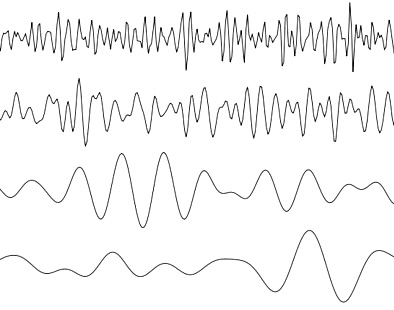
If you went to sleep tonight in a sleep lab, hooked up to a bunch of wires on your head and face, we’d be able to watch your brainwaves all through the night. What would we see, exactly?
Well, it’s complicated. But in a nutshell, we would see you cycles through very distinctive brainwave patterns as the night went on.
You’d start out awake, so your brainwaves would display short, fast, high frequency patterns. There are many processes going on in an awake and alert brain. That is reflected in “busy” brainwaves.
But as you progress into deeper sleep, we see that busy display begin to slow into large, tall patterns as your brain begins to shift into a state of less complicated processing. Now, brainwaves are more akin to waves of electrical activity sweeping across your cortex, rather than high activity buzzing all around.
Then something very interesting happens. After a period of time in deep sleep, we see your brainwaves begin to quicken again, as if you’re waking up. You’re still asleep, but your brain – at least electrically – seems to be coming to.
This is a unique period of sleep called REM (Rapid Eye Movement). It’s when we have our most vivid and active dreams, and is the target state for lucid dreams.
If you’re interested in improving dream recall and dream lucidity, consider this similarity between wakfulness and REM. Theoretically, if these two states are electrically similar, conscious recall and intention could carry over from wake to REM more easily than to other non-REM stages of sleep.
The takeaway tip: Boost your consciousness level during dreaming by simply understanding why REM is so important to dream explorers. REM in particular is greatly reduced by sleep deprivation. Better sleep leads to better dream recall and lucidity because you’re allowing your brain to fully cycle through it’s natural stages of sleep – and provide opportunities to bridge awareness and the dream state.